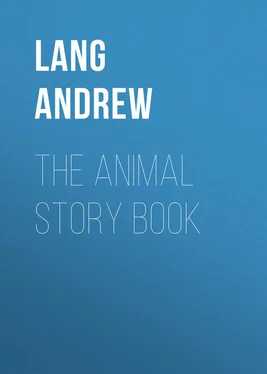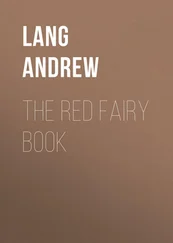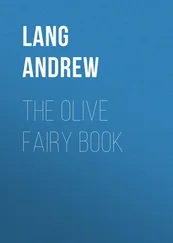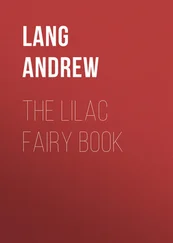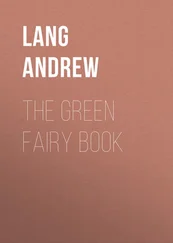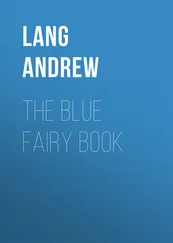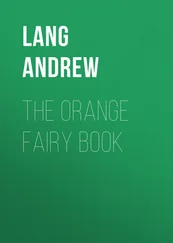Andrew Lang - The Animal Story Book
Здесь есть возможность читать онлайн «Andrew Lang - The Animal Story Book» — ознакомительный отрывок электронной книги совершенно бесплатно, а после прочтения отрывка купить полную версию. В некоторых случаях можно слушать аудио, скачать через торрент в формате fb2 и присутствует краткое содержание. Жанр: foreign_antique, foreign_prose, на английском языке. Описание произведения, (предисловие) а так же отзывы посетителей доступны на портале библиотеки ЛибКат.
- Название:The Animal Story Book
- Автор:
- Жанр:
- Год:неизвестен
- ISBN:нет данных
- Рейтинг книги:4 / 5. Голосов: 1
-
Избранное:Добавить в избранное
- Отзывы:
-
Ваша оценка:
- 80
- 1
- 2
- 3
- 4
- 5
The Animal Story Book: краткое содержание, описание и аннотация
Предлагаем к чтению аннотацию, описание, краткое содержание или предисловие (зависит от того, что написал сам автор книги «The Animal Story Book»). Если вы не нашли необходимую информацию о книге — напишите в комментариях, мы постараемся отыскать её.
The Animal Story Book — читать онлайн ознакомительный отрывок
Ниже представлен текст книги, разбитый по страницам. Система сохранения места последней прочитанной страницы, позволяет с удобством читать онлайн бесплатно книгу «The Animal Story Book», без необходимости каждый раз заново искать на чём Вы остановились. Поставьте закладку, и сможете в любой момент перейти на страницу, на которой закончили чтение.
Интервал:
Закладка:
Fortunately,’ the Baron says, ‘my gun was by my side. I rose and went to the rescue of the defenceless little creature. When the serpent saw me he knew he had another sort of enemy to deal with, and hissing furiously hurled himself in my direction, though without quitting his branch. I stopped and took aim. The serpent evidently understood my attitude perfectly, for unwinding himself he began to crawl with all his speed towards me. Between us there was fortunately an obstacle, a fallen chestnut tree; to reach me he must either climb over it or go round, and he was too furious to put up with any delay. Ten paces from the tree I waited for him to appear, one knee on the ground, my gun at my shoulder, and the other elbow resting on my knee to steady my aim. At last I saw his horrid head appear above the fallen tree, at the same moment I fired, and the ball pierced his head through and through, though without instantly killing him. Quick as lightning he wound himself round a branch, lashing out with his tail in all directions. It was his dying struggle; slowly his fury subsided, and uncoiling himself he fell dead alongside the tree. I measured him and found he was eight feet long, and seven or eight inches round. He was dark brown, and his head had two horns, or rather hard knobs. Wishing to carry away some souvenir to remember him by when I should be at home again in France, I tried to cut off his horns, but found it impossible. Out of curiosity I then took an axe and cut him open, when I found inside a little bird, dazed but living. Presently it revived and began to flutter about, and soon flew away among the bushes and was lost to sight. I did not then know that this is a common occurrence, and that when the Indians find a serpent asleep, as is generally the case after the creature has gorged itself, they hit it on the head with a stick, which makes it throw up what it has swallowed whole, and its victims are often still living.’
‘Fortunately,’ the Baron says, ‘my gun was by my side. I rose and went to the rescue of the defenceless little creature. When the serpent saw me he knew he had another sort of enemy to deal with, and hissing furiously hurled himself in my direction, though without quitting his branch. I stopped and took aim. The serpent evidently understood my attitude perfectly, for unwinding himself he began to crawl with all his speed towards me. Between us there was fortunately an obstacle, a fallen chestnut tree; to reach me he must either climb over it or go round, and he was too furious to put up with any delay. Ten paces from the tree I waited for him to appear, one knee on the ground, my gun at my shoulder, and the other elbow resting on my knee to steady my aim. At last I saw his horrid head appear above the fallen tree, at the same moment I fired, and the ball pierced his head through and through, though without instantly killing him. Quick as lightning he wound himself round a branch, lashing out with his tail in all directions. It was his dying struggle; slowly his fury subsided, and uncoiling himself he fell dead alongside the tree. I measured him and found he was eight feet long, and seven or eight inches round. He was dark brown, and his head had two horns, or rather hard knobs. Wishing to carry away some souvenir to remember him by when I should be at home again in France, I tried to cut off his horns, but found it impossible. Out of curiosity I then took an axe and cut him open, when I found inside a little bird, dazed but living. Presently it revived and began to flutter about, and soon flew away among the bushes and was lost to sight. I did not then know that this is a common occurrence, and that when the Indians find a serpent asleep, as is generally the case after the creature has gorged itself, they hit it on the head with a stick, which makes it throw up what it has swallowed whole, and its victims are often still living.’
Calooa on one occasion had a narrow escape. She had put her hand into a hollow in a branch of a cherry-tree where was a blue jay’s nest, to take eggs as she thought. Hardly had she put in her hand when she screamed with pain; a rattlesnake that had taken possession of the nest had stung her. The Baron, much alarmed, expected to see Calooa die before his eyes. He did not know of the remedy the Indians use for snake bites. Calooa herself was quite undisturbed, and hunted about among the bushes till she found the plant she knew of, then crushing some of the leaves between two stones, she applied them to the bite, and in a couple of hours was completely cured.
Besides these snakes the Baron learned from the Indians that there is another even more dangerous, not from its sting, which is not poisonous, but because it winds itself round its victim, and strangles him to death. Fortunately the Baron never met one, or he would probably not have lived to tell his snake stories.
WHAT ELEPHANTS CAN DO
Long, long ago the earth was very different from what it is now, and was covered with huge forests made up of enormous trees, and in these forests there roamed immense beasts, whose skeletons may sometimes be seen in our museums.
Of all these beasts there is only one remaining, and that is the elephant. Now the elephant is so big and shapeless that he makes one think he has been turned out by a child who did not know how to finish his work properly. He seems to need some feet badly and to want pinching about his body. He would also be the better for a more imposing tail; but such as he is, the elephant is more useful and interesting than many creatures of ten times his beauty. Large and clumsy though he may be, he alone of all animals has ‘between his eyes a serpent for a hand,’ and he turns his trunk to better account than most men do their two hands.
Ever since we first read about elephants in history they were just the same as they are now. They have not learnt, from associating with men, fresh habits which they hand down from father to son; each elephant, quick though he is to learn, has to be taught everything over again.
Yet there is no beast who has lived in such unbroken contact with man for so many thousands of years. We do not know when he first began to be distinguished for his qualities from the other wild animals, but as far back as we can trace the sculptures which adorn the Indian temples the elephant has a place. Several hundred years before Christ, the Greek traveller Herodotus was passing through Babylon and found a large number of elephants employed in the daily life of the city, and from time to time we catch glimpses of them in Eastern warfare, though it was not till the third century B.C. that they were introduced into Europe by Alexander the Great. The Mediterranean nations were quick to see the immense profit to which the elephant could be put, both in respect to the great weights he could carry, and also for his extraordinary teachableness. In India at the present day he performs all kinds of varied duties, and many are the stories told about his cleverness, for he is the only animal that can be taught to push as well as pull.
Most of us have seen elephants trained to perform in a circus, and there is something rather sad in watching their great clumsy bodies gambolling about in a way that is unnatural as well as ungraceful. But there is no question as to the amount that elephants can be taught, particularly by kindness, or how skilfully they will revenge themselves for any ill-treatment.
In the early part of this century an elephant was sent by a lady in India as a present to the Duke of Devonshire, who had a large villa at Chiswick.
This lucky captive had a roomy house of its own, built expressly for it in the park, a field to walk about in, and a keeper to look after it, and to do a little light gardening besides. This man treated the elephant (a female) with great kindness, and they soon became the best of friends. The moment he called out she stopped, and at his bidding would take a broom in her trunk and sweep the dead leaves off the grass; after which she would carefully carry after him a large pail of water for him to re-fill his watering pot – for in those days the garden-hose was not invented. When the tidying up was all done, the elephant was given a carrot and some of the water, but very often the keeper would amuse himself with handing her a soda-water bottle tightly corked, and telling her to empty it. This she did by placing the bottle in an inclined position on the ground and holding it at the proper angle with her foot, while she twisted the cork out with her trunk. This accomplished, she would empty all the water into her trunk without spilling a drop, and then hand the bottle back to her keeper.
Читать дальшеИнтервал:
Закладка:
Похожие книги на «The Animal Story Book»
Представляем Вашему вниманию похожие книги на «The Animal Story Book» списком для выбора. Мы отобрали схожую по названию и смыслу литературу в надежде предоставить читателям больше вариантов отыскать новые, интересные, ещё непрочитанные произведения.
Обсуждение, отзывы о книге «The Animal Story Book» и просто собственные мнения читателей. Оставьте ваши комментарии, напишите, что Вы думаете о произведении, его смысле или главных героях. Укажите что конкретно понравилось, а что нет, и почему Вы так считаете.
